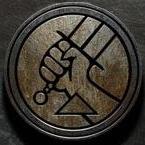morganbj
Posts: 3634
Joined: 8/12/2007
From: Mosquito Bite, Texas
Status: offline

|
quote:
ORIGINAL: rtrapasso
quote:
The Japanese practice was to communicate sightings of enemy combat ships as these occurred, as soon as was expedient for the sighting sub, and to report attacks by radio as soon as reasonable practical after the attack (and of course file detailed reports on return to port).
At least early in the war, the Japanese subs made (almost) daily contact reports... one sub that shelled the west coast was picked off when the contact positions (revealed by ULTRA, iirc, but maybe by triangulation) showed a Great Circle coarse from the site of the shelling back towards a major Japanese base (Kwaj, i think)... the USN sent out its forces and reportedly sunk it... i am trying to look up which one it was.
EDIT: i've read this story several times (and i think in different places), but in trying to actually identify the sub, i think the story is not accurate: either it was NOT the West Coast that was shelled, or the events never took place at all.
I-73 was intercepted and sunk by GUDGEON in the right time frame, but it had been shelling Midway, not the West Coast.
I think the costal defense installation at Astoria, Oregon was shelled at one point. My father-in-law was in a TBM crew that flew ASW out of there before joining the Princeton to prevent the base from being sheled again.
|
 Printable Version
Printable Version










 New Messages
New Messages No New Messages
No New Messages Hot Topic w/ New Messages
Hot Topic w/ New Messages Hot Topic w/o New Messages
Hot Topic w/o New Messages Locked w/ New Messages
Locked w/ New Messages Locked w/o New Messages
Locked w/o New Messages Post New Thread
Post New Thread